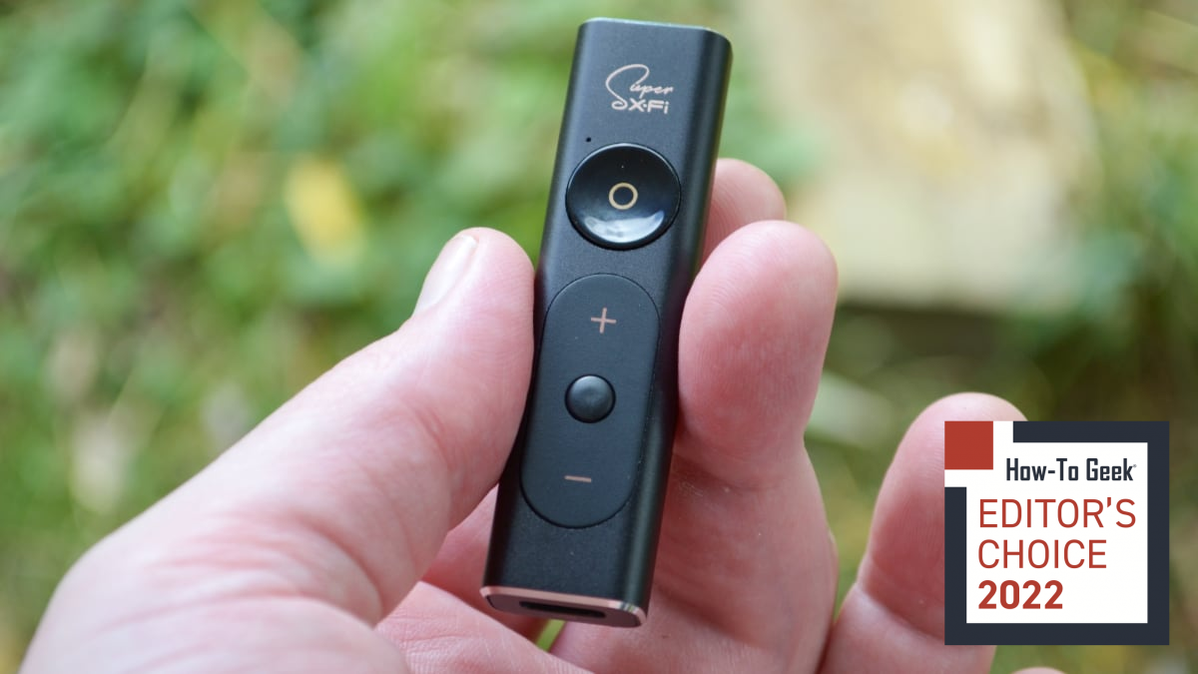
Creative’s Sound Blaster line started in the 1990s as computer sound cards, but now that name applies to a range of products. A case in point is the Creative Sound Blaster X1, a portable digital-to-analog converter and amplifier meant to help you get the most out of your favorite headphones.
Often, these portable DACs are aimed at the audiophile crowd. While the Sound Blaster X1 is definitely meant for music, it doesn’t stop there, as it uses Creative’s Super X-Fi technology. This is meant to make your headphones sound more like a real speaker system.
With support for Windows, macOS, Android, iPhone, iPad, PS4, PS5, and Nintendo Switch, the Sound Blaster X1 offers an affordable way to up your audio game. Is it worth it, or should you save up for a pricier solution?
Here’s What We Like
- Fantastic audio performance for the price
- Built-in headphone amplifier is surprisingly powerful
- AKM 4377 DAC chip makes for nice sounding conversion
- Onboard volume controls are useful
- Super X-Fi feature is great for movies and gaming
And What We Don’t
- Super X-Fi isn’t great for music
- Limited to 96 kHz sample rate
How-To Geek’s expert reviewers go hands-on with each product we review. We put every piece of hardware through hours of testing in the real world and run them through benchmarks in our lab. We never accept payment to endorse or review a product and never aggregate other people’s reviews.
Build and Controls
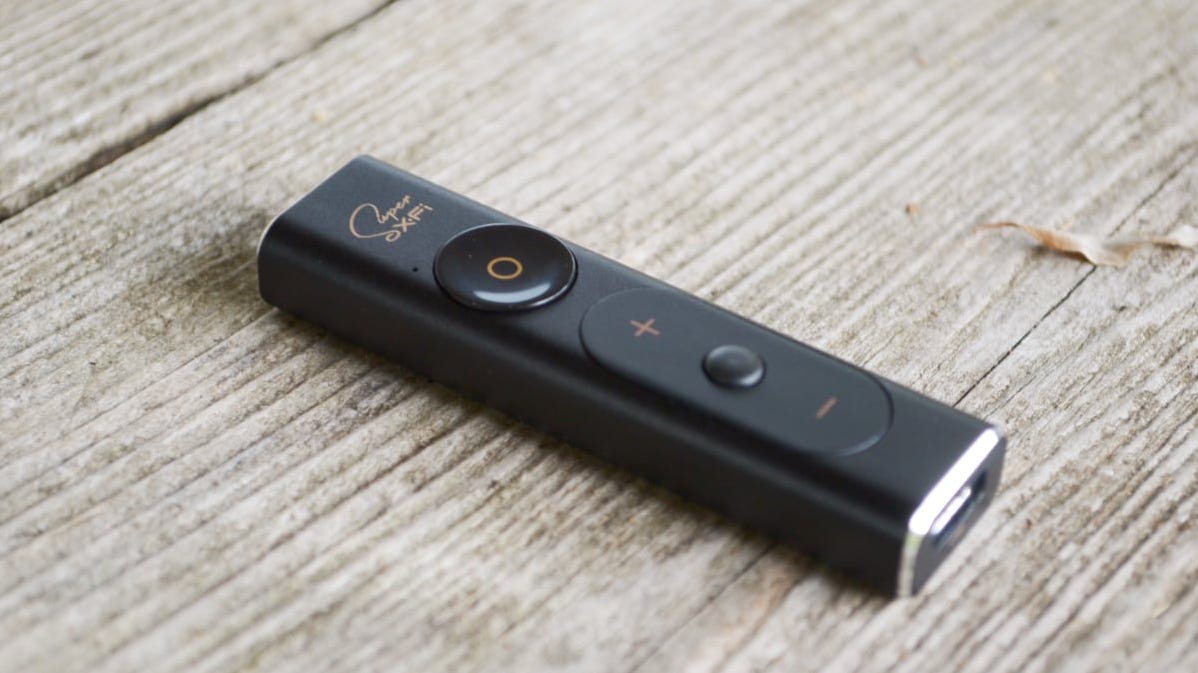
- Dimensions: 9.7 x 175 x 67mm (0.4 x 0.7 x 2.6in)
- Weight: 15g (0.5oz)
- Cable length: 80mm (3.1in)
The Creative Sound Blaster X1 packages two audio components, a digital to analog converter (DAC) and a headphone amplifier. Your phone, computer, or game console already has both of those, so why opt for an external DAC and amplifier?
Sound quality is the first answer. While any digital device with a headphone jack has a built-in DAC and headphone amp, they’re not a high priority on many devices. The second is that Creative has added quite a few features here. But first, let’s look at the device itself.
The Sound Blaster X1 is small, using a similar finger-sized form factor to other portable DACs / headphone amps. It’s a simple design with a USB-C port on one end, a 3.5mm headphone jack on the other, and the controls on the face of the unit.
Before you plug in the included USB-C cable, the Sound Blaster X1 measure just over 2.5 inches long. Once you add the USB cable and plug in your favorite headphones, the footprint gets somewhat larger, but the size and weight of the X1 alone likely won’t ever be worth thinking about.
The onboard controls are simple. You have volume controls—very handy for adjusting playback without reaching for your phone—with a multifunction button in the middle. Then there’s one more conspicuous button. This is the Super X-Fi button, which switches that feature on and off.
Getting Started With the SXFI App
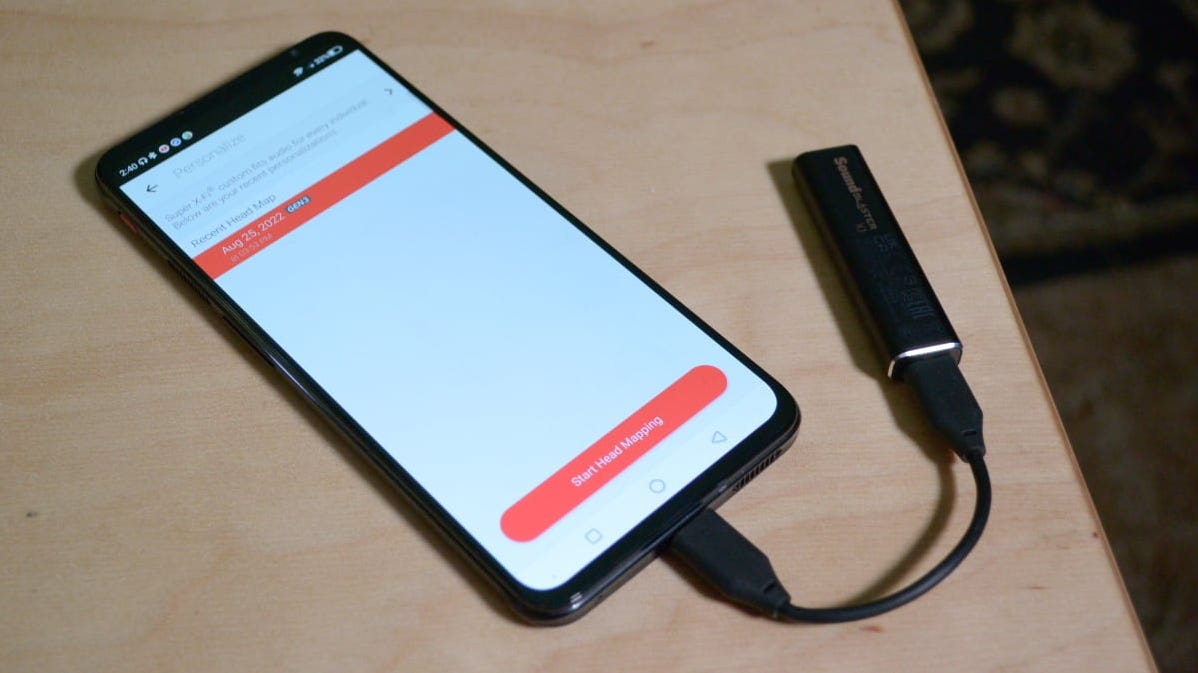
You can use the Sound Blaster X1 without setting it up, but to make the most of the device, you’ll want to use Creative’s SXFI app (available for iPhone, iPad, and Android) to set it up. If you have an Android device or iPad with a USB-C port, it’s best to run the software there, as you’ll see shortly.
Once you install and register with the app, it’s time to take some pictures of your ears. Yes, Creative’s Super X-Fi adjusts its sound based on mapping your ears and the shape of your face. It’s handy if you have someone to take photos for you here, but I imagine with some time and a mirror or two, you can get through this process on your own.
After you’ve completed the ear and head mapping portion, the app asks you to select the headphones you have. Not every model of headphone is listed, and there is an emphasis on Creative’s own headphones, but my Sennheiser HD650s were on the list.
At this point, assuming your device has a USB-C port, you can plug the Sound Blaster X-Fi in, and your settings will transfer onboard. If you’re using an iPhone, you can download the Creative App for macOS or Windows and transfer your settings from there, as they’re saved in the cloud.
Sound Quality
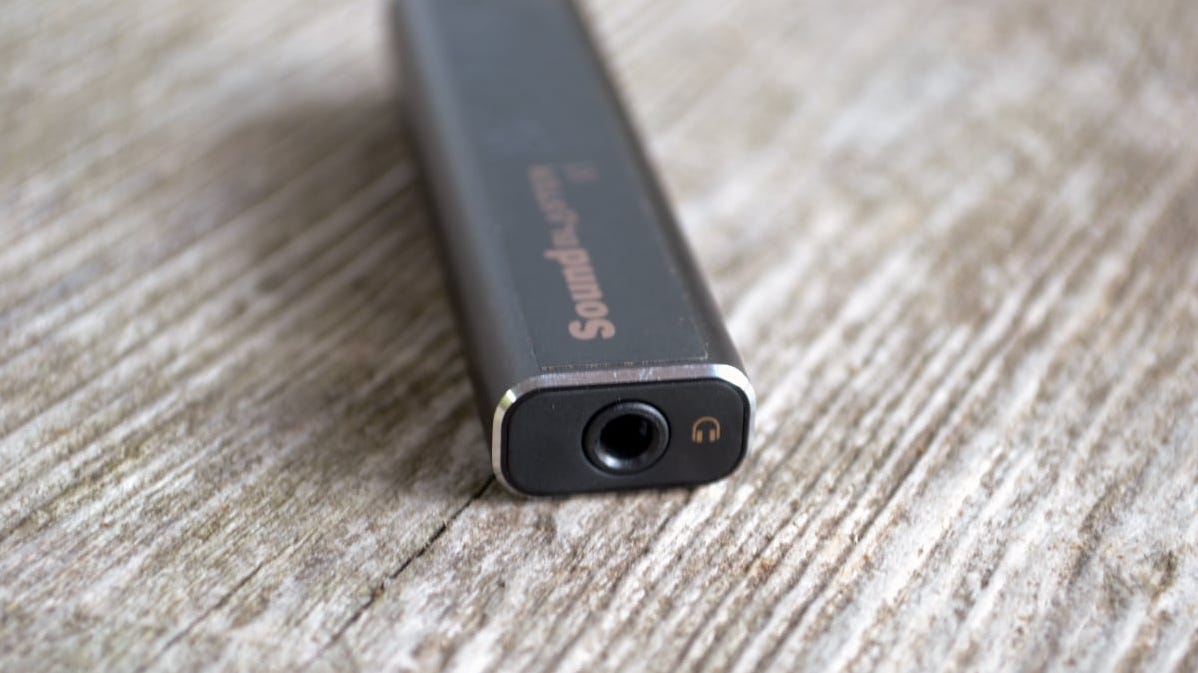
- Playback resolution: PCM 16-bit, 44.1, 48.0, 96.0kHz, PCM 24-bit, 44.1, 48.0, 96.0kHz
- DAC: AKM AK4377, THD+N: Up to -105 dB or 0.00056%, SNR: Up to 115 dB, Frequency Response: 10 — 20,000 Hz, Max Sampling Rate: 24-bit / 96 kHz
- Supported headphone impedance: 16–600ohm
For the Sound Blaster X1, Creative opted to use the AKM 4377 DAC chip. This chip is used fairly often in more budget-oriented MP3 players and digital audio players, and is fairly well regarded. To drive your headphones, the X1 uses a Ti/Burr-Brown INA1620 dual audio operational amplifier.
One thing that’s interesting about the Sound Blaster X1, and something you won’t necessarily see even in higher-priced competitors, is the headphone support. The X1 supports headphones up to 600 ohms, meaning it can theoretically drive some headphones that are notoriously hard to power with a portable amp.
To test this out, I chose my Sennheiser HD650s to listen first. For this portion, I listened with Super X-Fi turned off. For more about that, see the next section of this article.
It’s not like if you plug the HD650s into your phone’s headphone jack (assuming it has one), they won’t work. They still make sound, but the maximum volume is limited, and the audio doesn’t shine the way it does when the headphones are paired with a good amp.
When I plugged in the HD650s with the Sound Blaster X1, I was surprised by the volume first. Then I noticed that the undefined low-end and muffled highs I associate with an amp struggling to drive the HD650s weren’t anywhere to be found.
Now, compared to my usual setup—a Schiit Audio Modi DAC and Asgard headphone amp—there were differences. I noticed some more sparkle in the high end on the more expensive setup, whereas the Sound Blaster X1 still had a very slight veil over the treble.
That said, this wasn’t exactly a fair test, since I was testing the X1 against a setup around five times its price. Considering the stacked odds, the X1 held up fairly well.
Super X-Fi and the Creative App
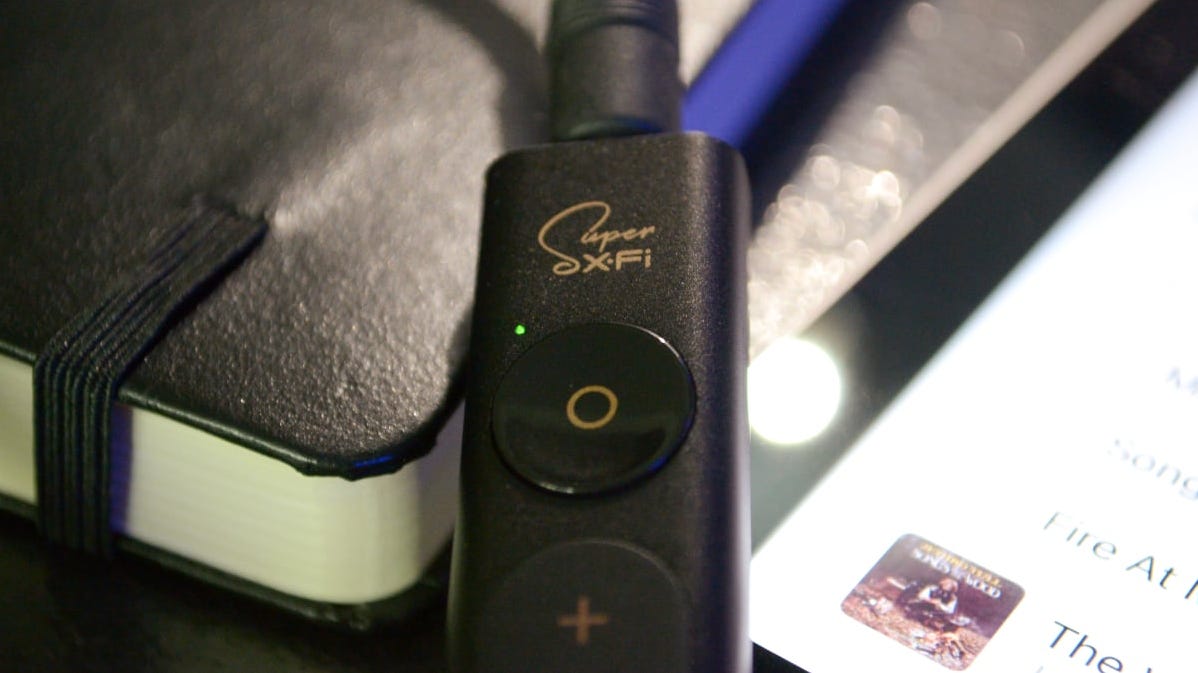
As mentioned earlier in the article, Creative’s Super X-Fi aims to make your headphones sound less like headphones and more like speakers. Basically, using some DSP trickery to trick you into hearing more space around you. When it works, it works quite well.
I say when it works because the first time I hit the Super X-Fi button on the X1, I thought I’d hit the “make everything sound bad” button. Everything was suddenly tinny and harsh, and I quickly turned the feature off. Of course, this was before I’d used the SXFI app to set up the X1.
Afterward, I still didn’t like the sound of Super X-Fi for music. To me, it sounded too much like listening to music on a 5.1-channel home theater system, which I’m not a fan of, real speakers or fake.
On the other hand, Super X-Fi worked great for movies and TV. I’d hit the button while watching a movie on my laptop, and suddenly, it sounded like I was in a room with speakers everywhere, rather than just wearing headphones. This added dimension was especially noticeable with movies.
If you’re using the Sound Blaster X1 on Windows or macOS, make sure to download the Creative App. This adds more features to the X1, like adjustable EQ and CrystalVoice, which can make the mic on your headphones or gaming headset sound clearer.
Speaking of gaming, the Creative App also has numerous sound modes for gaming. This ranges from a standard “Gaming” preset to presets for different genres and even specific games.
Should You Buy the Creative Sound Blaster X1?
I honestly wasn’t expecting to be as impressed with the sound of the Creative Sound Blaster X1 as I was. While it isn’t necessarily meant as one, this could be a great budget pick for your first mobile audiophile setup, assuming your phone or player has a USB-C port.
The only slight issue with that is the lack of support for native 192 kHz. With more digital music stores and services offering 192 kHz files and streams, it would have been nice to see this here. That said, considering the price, some compromises are understandable, and you can still listen to higher resolution files, they’re just downsampled to 96 kHz.
The Sound Blaster X1 is the DAC / headphone amp equivalent of a Swiss Army knife, with features for music fans, film buffs, and gamers alike. This means that not every feature is the best it can be, but considering the price, Creative has pulled off an impressive feat here.
Rating: 9/10
Price: $69.99
Here’s What We Like
- Fantastic audio performance for the price
- Built-in headphone amplifier is surprisingly powerful
- AKM 4377 DAC chip makes for nice sounding conversion
- Onboard volume controls are useful
- Super X-Fi feature is great for movies and gaming
And What We Don’t
- Super X-Fi isn’t great for music
- Limited to 96 kHz sample rate
